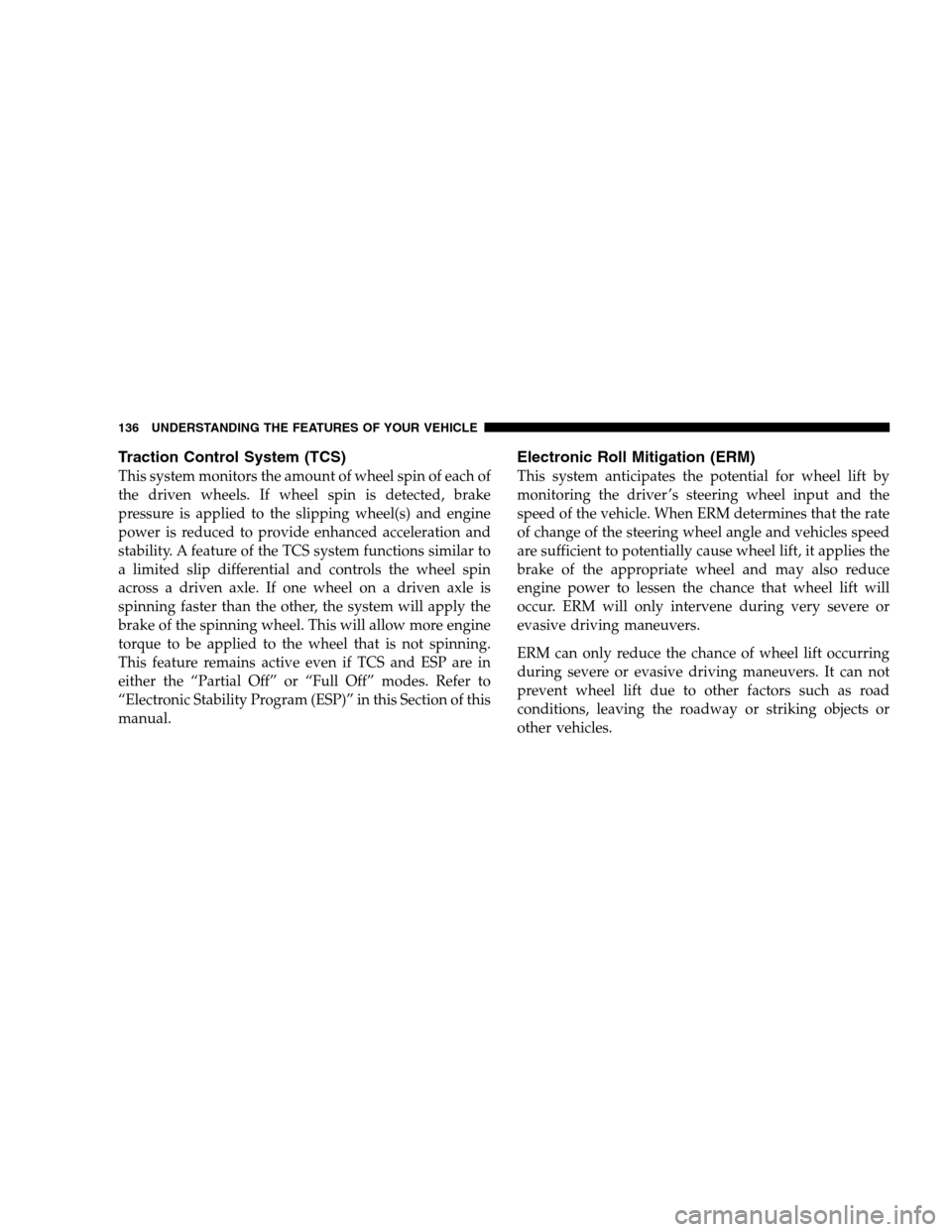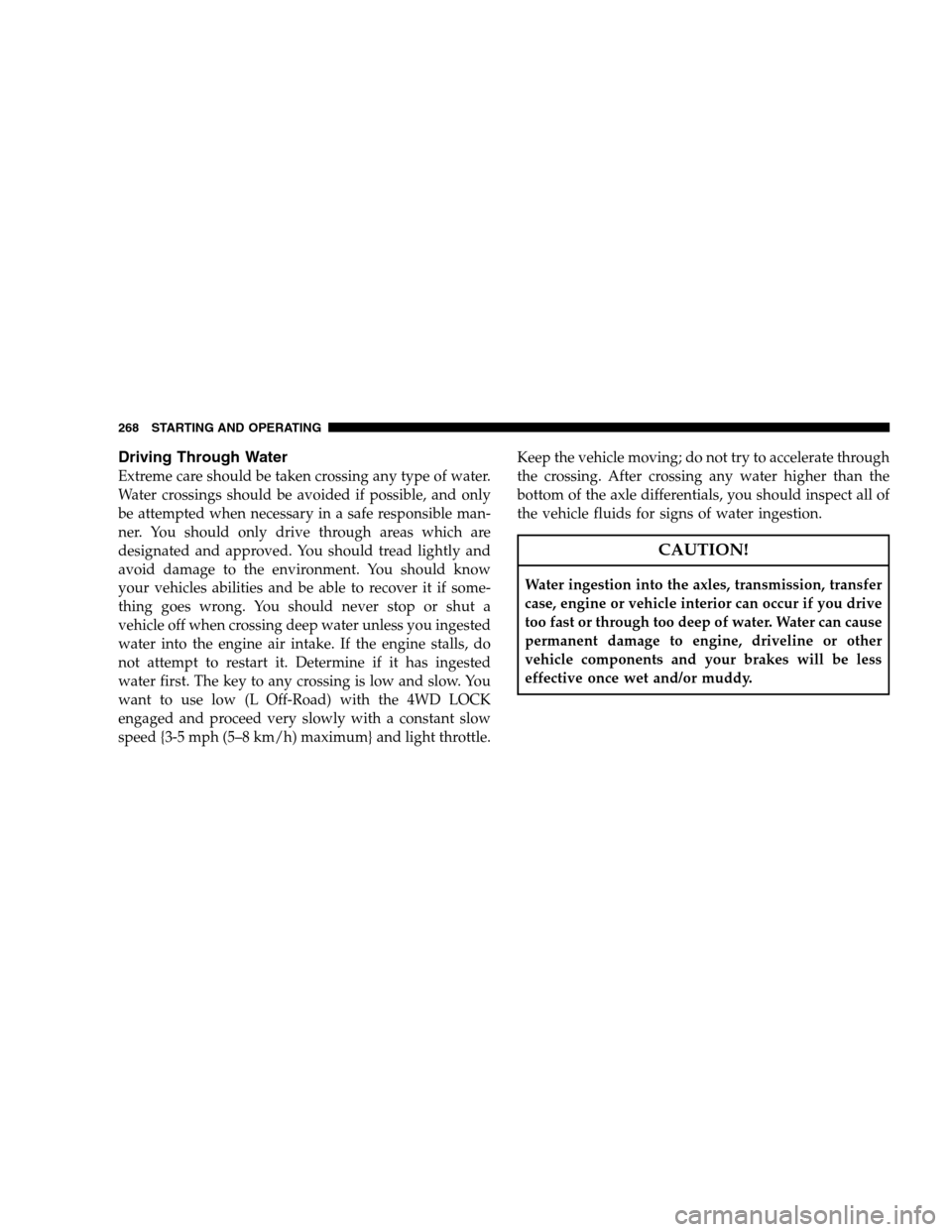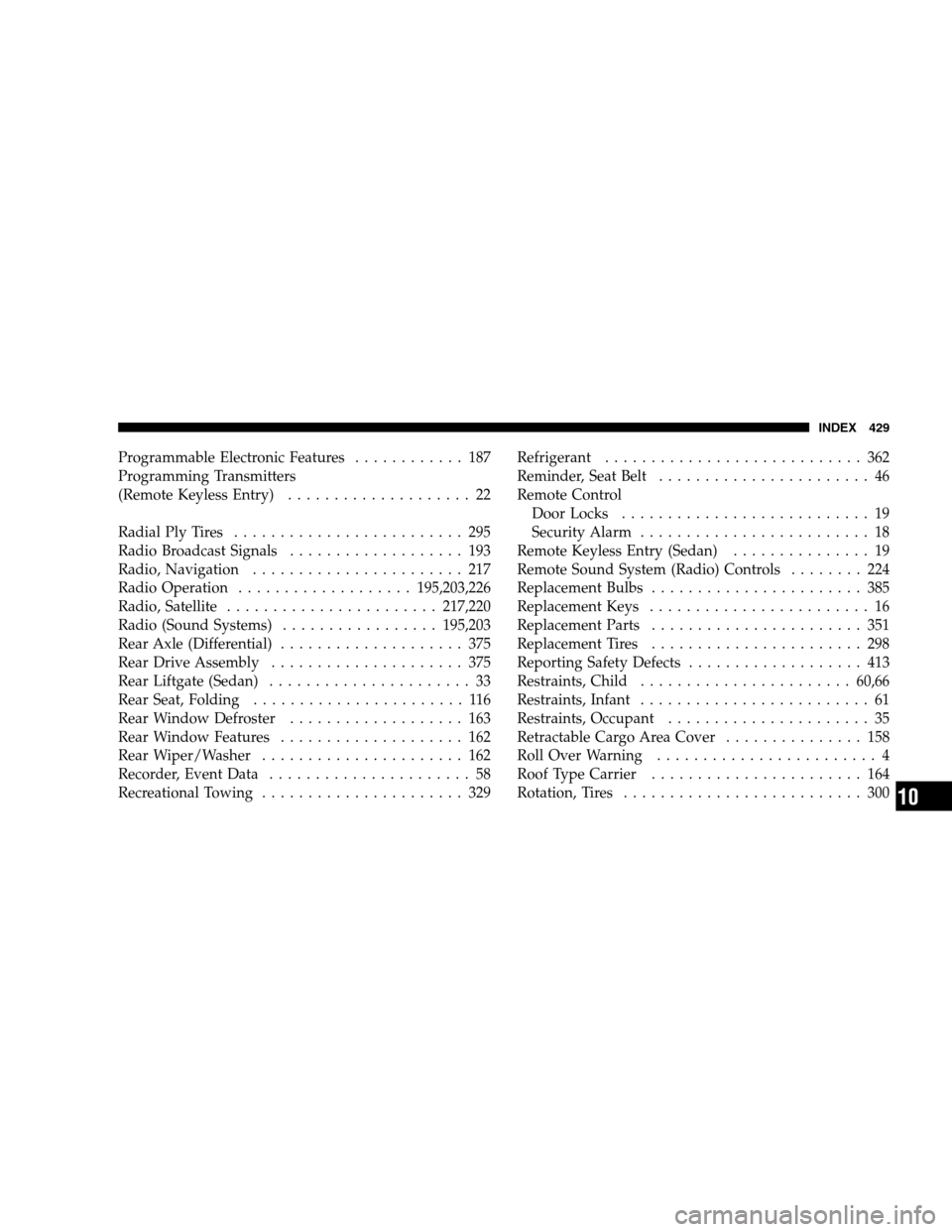Page 138 of 438

Traction Control System (TCS)
This system monitors the amount of wheel spin of each of
the driven wheels. If wheel spin is detected, brake
pressure is applied to the slipping wheel(s) and engine
power is reduced to provide enhanced acceleration and
stability. A feature of the TCS system functions similar to
a limited slip differential and controls the wheel spin
across a driven axle. If one wheel on a driven axle is
spinning faster than the other, the system will apply the
brake of the spinning wheel. This will allow more engine
torque to be applied to the wheel that is not spinning.
This feature remains active even if TCS and ESP are in
either the “Partial Off” or “Full Off” modes. Refer to
“Electronic Stability Program (ESP)” in this Section of this
manual.
Electronic Roll Mitigation (ERM)
This system anticipates the potential for wheel lift by
monitoring the driver ’s steering wheel input and the
speed of the vehicle. When ERM determines that the rate
of change of the steering wheel angle and vehicles speed
are sufficient to potentially cause wheel lift, it applies the
brake of the appropriate wheel and may also reduce
engine power to lessen the chance that wheel lift will
occur. ERM will only intervene during very severe or
evasive driving maneuvers.
ERM can only reduce the chance of wheel lift occurring
during severe or evasive driving maneuvers. It can not
prevent wheel lift due to other factors such as road
conditions, leaving the roadway or striking objects or
other vehicles.
136 UNDERSTANDING THE FEATURES OF YOUR VEHICLE
Page 270 of 438

Driving Through Water
Extreme care should be taken crossing any type of water.
Water crossings should be avoided if possible, and only
be attempted when necessary in a safe responsible man-
ner. You should only drive through areas which are
designated and approved. You should tread lightly and
avoid damage to the environment. You should know
your vehicles abilities and be able to recover it if some-
thing goes wrong. You should never stop or shut a
vehicle off when crossing deep water unless you ingested
water into the engine air intake. If the engine stalls, do
not attempt to restart it. Determine if it has ingested
water first. The key to any crossing is low and slow. You
want to use low (L Off-Road) with the 4WD LOCK
engaged and proceed very slowly with a constant slow
speed {3-5 mph (5–8 km/h) maximum} and light throttle.Keep the vehicle moving; do not try to accelerate through
the crossing. After crossing any water higher than the
bottom of the axle differentials, you should inspect all of
the vehicle fluids for signs of water ingestion.
CAUTION!
Water ingestion into the axles, transmission, transfer
case, engine or vehicle interior can occur if you drive
too fast or through too deep of water. Water can cause
permanent damage to engine, driveline or other
vehicle components and your brakes will be less
effective once wet and/or muddy.
268 STARTING AND OPERATING
Page 431 of 438

Programmable Electronic Features............ 187
Programming Transmitters
(Remote Keyless Entry).................... 22
Radial Ply Tires......................... 295
Radio Broadcast Signals................... 193
Radio, Navigation....................... 217
Radio Operation...................195,203,226
Radio, Satellite.......................217,220
Radio (Sound Systems).................195,203
Rear Axle (Differential).................... 375
Rear Drive Assembly..................... 375
Rear Liftgate (Sedan)...................... 33
Rear Seat, Folding....................... 116
Rear Window Defroster................... 163
Rear Window Features.................... 162
Rear Wiper/Washer...................... 162
Recorder, Event Data...................... 58
Recreational Towing...................... 329Refrigerant............................ 362
Reminder, Seat Belt....................... 46
Remote Control
Door Locks........................... 19
Security Alarm......................... 18
Remote Keyless Entry (Sedan)............... 19
Remote Sound System (Radio) Controls........ 224
Replacement Bulbs....................... 385
Replacement Keys........................ 16
Replacement Parts....................... 351
Replacement Tires....................... 298
Reporting Safety Defects................... 413
Restraints, Child....................... 60,66
Restraints, Infant......................... 61
Restraints, Occupant...................... 35
Retractable Cargo Area Cover............... 158
Roll Over Warning........................ 4
Roof Type Carrier....................... 164
Rotation, Tires.......................... 300
INDEX 429
10